Connected watches are more and more powerful, but their limited autonomy prevents them from taking advantage of certain functions. Fortunately, alternatives exist and they are sufficient for most users.
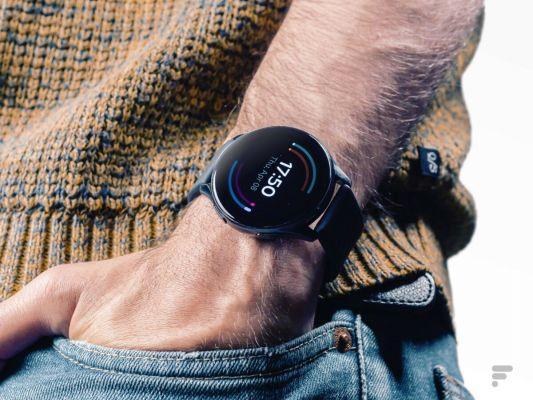
The OnePlus Watch // Source: Arnaud Gelineau - Idroid
If we were to oversimplify the world of connected watches, there are in fact two types of knockers that coexist. On the one hand, very sophisticated watches, equipped with powerful processors with a number of applications installed, uses for everything and, above all, a complete fleet of applications. These are mainly Samsung, Apple, Fossil or TicWatch watches under Wear OS, watchOS or, formerly, Tizen.
On the other hand, we have much more stupid watches, under RTOS or HarmonyOS, which are content to tell the time, to record your physical activity, to send you your notifications, to play music or, possibly, to make voice calls.
To learn more
What are the best smartwatches in 2021?
On paper, the choice is therefore easy: it is better to turn to sophisticated watches, those from Apple, Fossil, Samsung or TicWatch. But in use, it is clear that these watches are often much less practical than expected.
Powerful watches, but with limited autonomy
In fact, who says sophisticated smartwatch often says more powerful watch. A more efficient processor is needed to manage third-party applications, the various dials, real-time health measurements, not to mention a fluid display on the watch screen. On Wear OS, Qualcomm also has a virtual monopoly with its Snapdragon Wear 3100, 4100 and 4100+ processors.
Add to this that the small size of connected watches prevents the integration of large batteries and you will get the main problem of these watches under watchOS and Wear OS: their autonomy.
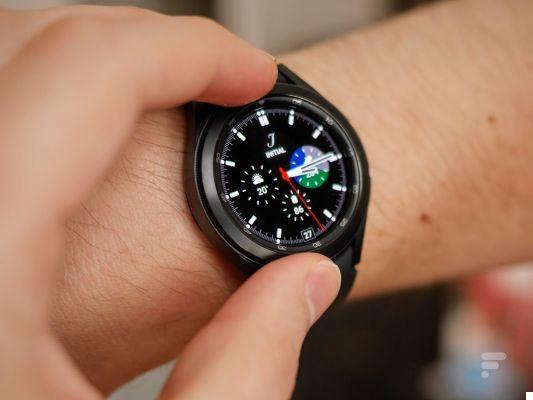
La Samsung Galaxy Watch 4 Classic // Source : Idroid
Google does indicate that it has made progress with the update to Wear OS 3, but the Galaxy Watch 4 and Watch 4 Classic - the only watches to benefit from it so far - do not manage to exceed the two days of autonomy. A rather poor result, even when deactivating the always on screen or the continuous monitoring of the heart rate. It must be said, however, that Wear OS has come a long way with some previous watches that could not work for more than a day.
On the market leader's side, the Apple Watch is not doing much better. For its Series 6 last year, Apple couldn't get past the full day of use. For its part, the latest watch, the Apple Watch Series 7, is promoted with a similar autonomy of 18 hours. We can consider that there is better given the larger screen, but this remains particularly short in that the watch will not manage to fulfill all of its features.
Sleep analysis functions… unused
In itself, what is the problem? You charge your smartphone well all night, why would it be embarrassing to do the same with your connected watch? Because, more and more, manufacturers are promoting advanced sleep monitoring functions. This has been the case with Apple's watchOS since last year, but also with all manufacturers.
Now, smartwatches can all automatically analyze the time of day you fall asleep and wake up, but can also analyze the different cycles and distinguish between deep sleep, light sleep or REM sleep. It is also often only during these phases of sleep - when you move little - that the watches will continuously analyze the oxygen saturation in your blood.
Some watches even go so far as to analyze your breathing during the night, for example to detect sleep apnea. Samsung takes the vice even further by going so far as to record your potential snoring phases, so you can hear yourself buzzing in the early hours of the morning.
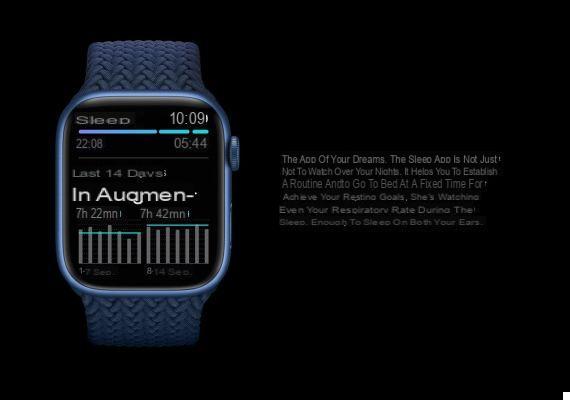
The sleep analysis functions on the Apple Watch Series 7 // Source: Apple
The problem, you can see it clearly: if your watch charges during the night, you lose the possibility of taking advantage of these various functions related to the analysis of your phases of sleep. However, it is of course these night health data that the builders are pushing forward. Apple also communicates very clearly on this subject on its website for the Apple Watch Series 7. “The Sleep app doesn't just watch over your nights. It helps you establish a routine and get to bed at a set time to meet your rest goals. It even monitors your respiratory rate during sleep. Something to sleep soundly ”.
And the same goes for Samsung with its Galaxy Watch 4: “The feature detects and analyzes your sleep stages while you are resting. Improved measurement options allow you to check your blood oxygen levels and snoring habits (we're not saying you snore) ”.
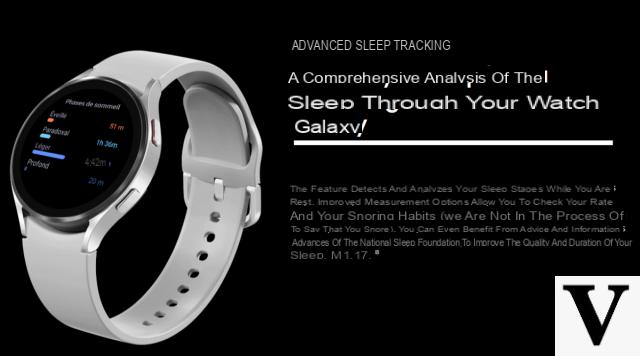
The sleep analysis functions on the Samsung Galaxy Watch 4 // Source: Samsung
On the Apple side, in order to overcome this problem, we increased the charging speed of the Apple Watch Series 7, which is supposed to recover all of its battery in one hour. In addition, the manufacturer indicates that 8 minutes of charge makes it possible to ensure the follow-up of 8 hours of sleep. But you still have to think about recharging it every day at a fixed time, and especially think about recovering it once the charge is finished.
To see more clearly on the uses of connected watches, I asked on Twitter at what time of the day people charge their connected watches. And the result is unequivocal.
Small question, for an article, if you have an Apple Watch or a Wear OS watch: you charge it at what time of the day?
— Geoffroy Husson (@Griffoooo) October 20, 2021
More than half of the people who responded to this small survey - which makes no claim to representativeness - say they charge their Apple Watch or their Wear OS watch overnight. A recharging period which therefore deprives them of a whole part of the health measures yet widely put forward by the manufacturers.
Admittedly, there are quite a few answers for the evening or the morning, generally in order to make sure to have a good follow-up of the sleep during the night, but this is a minority among the answers received and the load less. one hour of the most recent watches will not change that.
Stupid watches, but much more autonomous
The concern is that faced with its hyper powerful and particularly energy-consuming watches, we now find plethora of connected watches with much greater autonomy. Watches designed by Huawei, Zepp, OnePlus or Amazfit that promise more than a week of autonomy and health monitoring similar to what Fossil or Samsung offer.
Of course, we will not always have an EKG, but these watches also offer sleep monitoring, SpO2 measurement, heart rate monitoring and sometimes even a built-in GPS to follow the course of your workouts.
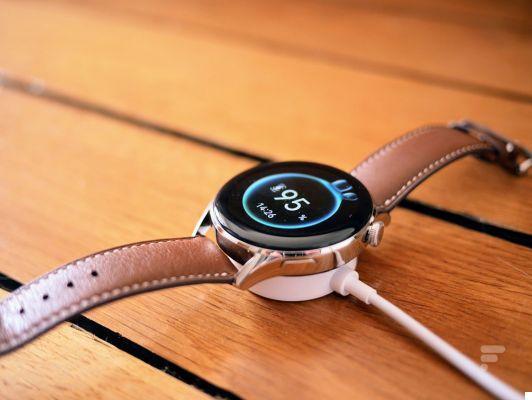
The Huawei Watch 3 charger // Source: Idroid
So let's not kid ourselves, these watches are often less efficient than models from TicWatch, Apple or Samsung. They do not allow the installation of third-party applications - or a number which is still too limited - rarely allow the connection of Bluetooth headphones, and generally cannot be used without a smartphone connected via Bluetooth. Above all, they do not allow the installation of third-party applications.
In this, we could almost consider that they are simple connected bracelets that only offer activity tracking, notification display and possibly music controls. But these watches will be sufficient for most of the users.
Watches that track your activity and keep you informed of your notifications
In October 2018, a survey conducted by CCS Insight (pdf) reported that the functions most used by smartwatch users were checking the time, notifications and activity tracking. “People value notifications for activity updates, new messages and emails, and inbound calls,” the institute said.
However, these three functions are precisely those that are also found on these “stupid” watches, those of Amazfit, Huawei or OnePlus. Of course, the Apple Watch allows you to download more than 50 applications on your watch, but apart from the timer to cook pasta, consulting WhatsApp messages or SMS or monitoring workouts, which applications are used regularly? daily?
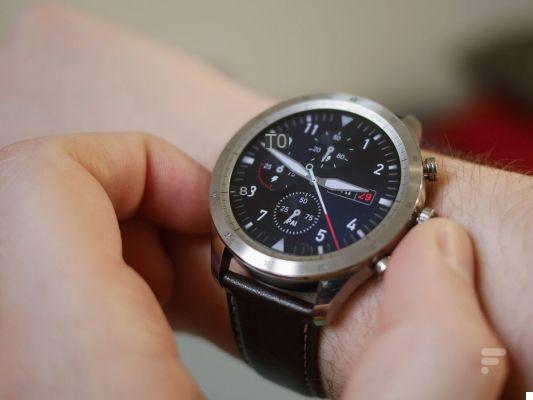
The rotating crown to navigate the Zepp Z interface // Source: Idroid
The advantage of these less powerful watches is precisely that this gap turns into strength when it comes to autonomy. The OnePlus Watch was heavily criticized when it was launched, but it provides a week of use. The same goes for the Huawei Watch 3 when the Amazfit GTR 3 Pro that I'm testing right now can run for four days with the always on screen and continuous heart rate monitoring and the manufacturer provides up to 12 days of autonomy.
Ultimately, these stupid watches aren't the best on the market, nor the most powerful. To paraphrase The Dark Knight, these aren't the watches you want, but the ones you deserve.


























